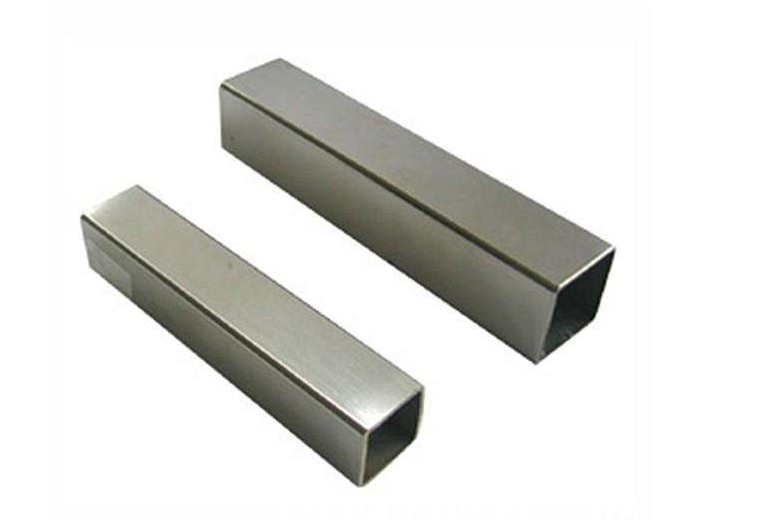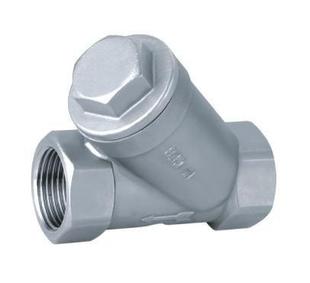What is stainless steel?
Stainless steel is a kind of steel, which contains less than 2% carbon (c), which is called steel, and more than 2% is iron. The addition of chromium (CR), nickel (Ni), manganese (MN), silicon (SI), titanium (TI), molybdenum (MO) and other alloy elements in the smelting process improves the properties of the steel and makes the steel have corrosion resistance (i.e. no rust), which is what we often call stainless steel.
Why do stainless steels have different grades?
In the smelting process of stainless steel, due to the variety of alloy elements added, the amount of different varieties is different. Its characteristic is also different, in order to distinguish, it is crowned with different steel grades

What kind of stainless steel is not easy to rust?
There are three main factors affecting the corrosion of stainless steel: one is the content of alloy elements. Generally speaking, the steel is not easy to rust when the content of chromium is 10.5%. The higher the content of chromium and nickel, the better the corrosion resistance. For example, the content of nickel in 304 material is 8-10%, and the content of chromium is 18-20%. In general, such stainless steel will not rust. Second: the smelting process of the production enterprise will also affect the corrosion resistance of stainless steel. Large stainless steel plants with good smelting technology, advanced equipment and advanced technology can be guaranteed in terms of alloy element control, impurity removal and billet cooling temperature control. Therefore, the product quality is stable and reliable, the internal quality is good, and it is not easy to rust. On the contrary, some small steel plants are backward in equipment and technology. In the smelting process, impurities cannot be removed, and the products produced will inevitably rust. Third: external environment, dry climate, good ventilation environment is not easy to rust. But the air humidity is big, the continuous rainy weather, or the air contains the acid and alkali degree big environment area is easy to rust. If the material of 304 is too poor, the surrounding stainless steel will rust.
Is stainless steel without magnetism?
Is it good stainless steel without magnetism? If the microstrip is magnetized, isn’t it 304?
Many customers go to the market to buy stainless steel. They bring a small magnet with them. When they look at the goods, they think that the stainless steel that can’t be sucked is good stainless steel. Without magnetism, there will be no rust. In fact, this is a wrong understanding. Stainless steel with or without magnetism is determined by the structure. During the solidification process of molten steel, due to the different solidification temperature, stainless steels with different structures such as “ferrite”, “austenite” and “mar tensite” will be formed. Among them, “ferrite” and “martensite” stainless steels are magnetic. However, only in terms of corrosion resistance, ferrite stainless steel with magnetic field is better than austenitic stainless steel. At present, the so-called 200 series and 300 series stainless steels with high manganese content and little nickel content in the market do not have magnetism, but their performance is far from that of 304 with high nickel content. On the contrary, 304 will be slightly magnetic after drawing, annealing, polishing, casting and other processes. Therefore, it is a misunderstanding and unscientific to judge the advantages and disadvantages of stainless steel by using stainless steel belt without magnetism.

Why does stainless steel rust?
When there are brown rust spots (spots) on the surface of stainless steel, people are surprised: “stainless steel will not rust, rust is not stainless steel, maybe there is a problem with steel quality”. In fact, this is a one-sided wrong view of the lack of understanding of stainless steel. Stainless steel will rust under certain conditions. Stainless steel has the ability to resist atmospheric oxidation, that is, stainless steel has the ability of corrosion resistance in the medium containing acid, alkali and salt, namely corrosion resistance. However, the corrosion resistance of the steel varies with its chemical composition, mutual state, service condition and environmental medium type. For example, 304 material has absolutely excellent corrosion resistance in dry and clean atmosphere, but if it is moved to the coastal area, it will rust quickly in the sea fog containing a lot of salt. Therefore, not any kind of stainless steel, at any time can be resistant to corrosion, rust. Stainless steel is formed on its surface by a layer of extremely thin and firm and stable chromium rich oxide film (protective film), to prevent oxygen atoms from penetrating into and continuing to oxidize, and obtain the ability of corrosion resistance by numerical control. But for some reason, the film is constantly damaged, the air or liquid oxygen atoms will continue to penetrate or metal iron atoms will continue to separate out, forming loose iron oxide, the metal surface will be constantly corroded. There are many forms of destruction of the surface film.
1. Dust containing other metal elements or attachments of different metal particles are accumulated on the surface of stainless steel. In humid air, the condensed water between the attachment and stainless steel connects them into a micro cell, which causes electrochemical reaction and damages the protective film, which is called electrochemical corrosion.
2. The surface of stainless steel is adhered with organic juice (such as melon and vegetable, noodle soup, phlegm, etc.), which forms organic acid under the condition of water and oxygen, and forms the corrosion of organic acid on the metal surface for a long time.
3. The adhesion of stainless steel surface contains acid, alkali and salt substances (such as alkali water and lime water spray test of decoration wall) to cause local corrosion.
4. In the polluted air (containing a large number of sulfide, oxide, hydrogen oxide), condensed water, sulfuric acid, nitric acid, acetic acid liquid point, causing chemical corrosion.
The above conditions can cause the damage of the protective film on the surface of stainless steel and cause corrosion. Therefore, in order to ensure that the metal surface is permanently bright and not rusted, we suggest that: 1) the surface of decorative stainless steel must be cleaned and scrubbed frequently to remove the attachments and eliminate the external factors causing corrosion. ② There is a kind of 201 and 202 stainless steel on the market, which is easy to rust in coastal areas, and is suitable for use in the environment without industrial pollution and air corrosion. ③ 304 stainless steel should be used in coastal area, which can resist seawater corrosion.
How to deal with rust spot of stainless steel?
A) chemical method: using acid pickling paste or spray to assist the rust part to be passivated to form chromium oxide film to restore its corrosion resistance. After pickling, it is very important to rinse properly with clean water in order to remove all pollutants and acid residues. After all treatment, use polishing equipment to polish again and seal with polishing wax. If there are slight rust spots on the part, the rust spots can also be wiped off with a clean rag with a mixture of gasoline and engine oil of 1:1. b) Mechanical methods: blast cleaning, shot peening with glass or ceramic particles, annihilation, brushing and polishing. It is possible to remove contamination from previously removed, polished or annihilated materials by mechanical means. All kinds of pollution, especially foreign iron particles, can be the source of corrosion, especially in humid environment. Therefore, the mechanical cleaning of the surface should preferably be carried out in dry conditions. The mechanical method can only clean the surface, but can not change the corrosion resistance of the material itself. Therefore, it is recommended to use polishing equipment to re Polish after mechanical cleaning and seal with polishing wax.










